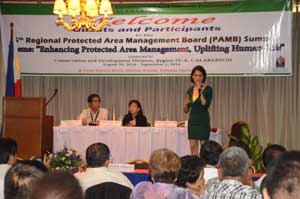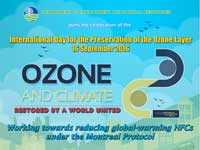INTER-AGENCY TASK FORCE FOR IPS FORMED
The Department of Environment and Natural Resources (DENR) has led the creation of an inter-agency task force that would guarantee social protection and uphold the self-determination and development of all indigenous peoples (IPs) in the country.
The task force is composed of representatives from the DENR, the National Commission on Indigenous Peoples (NCIP), and the Natural Resources Development Corp. (NRDC), the DENR's corporate arm.
The three agencies signed on Wednesday a memorandum of understanding (MOU) to form the Indigenous Peoples Inter-Agency Task Force (IPITF).
DENR Undersecretary Demetrio Ignacio represented Secretary Regina Paz Lopez in the MOU signing, with NCIP executive director and chair Atty. Leonor T. Oralde-Quintayo and NRDC president-designate Sylvia Ordonez signing in behalf of their agencies.
The MOU signing came a week after Lopez announced that an IP Desk will be set up at the DENR central office in Quezon City.
She said the IP Desk will attend to the concerns of IPs who often face threats of land grabbing, forced eviction and human- rights violations.
Under the MOU, a technical working group will be formed to draft the rules of procedures to ensure the observance, effectiveness and smooth functioning of the task force.
The IPITF is tasked to make sure that the IPs are "not subjected to undue pressure and influence from unscrupulous businessmen or other industries intending to extract natural resources."
It is likewise expected to "act towards the fulfillment of the objectives of environmental laws and [IP] rights."
The DENR has promised to ensure the conservation and sustainable use of resoures within ancestral domains and preserve biodiversity, as well as to employ a strict policy of verifying the authenticity of documents pertaining to the use of lands within IP communities.
It also agreed to refrain from issuing titles within ancestral domains and provide opportunities for NCIP to access the Enhanced National Greening Program, the government's massive reforestation and poverty alleviation initiative, for the empowerment of IPs.
For her part, Quintayo said that she was “touched” by the new role given by Lopez to the commission.
“This is the first time that the NCIP and the DENR are working at the national level for really working with the indigenous peoples,” Quintayo said.
She said the preservation and development of ancestral lands for the benefit of IPs require convergence and the intervention of experts, which the collaboration among the three agencies will provide.
The NRDC, for its part, vowed to provide human resources and capital so that the IP communities will be able to make optimum use of their land resources.
The corporation also promised to assist in consultations, planning, product development and marketing for any social enterprise an IP community might wish to undertake.
Whenever available, the NRDC will provide the capital funding or mobilize resources to support biodiversity-friendly social enterprises.
The NCIP, on the other hand, will ensure sustainable use and development of ancestral domains of IPs, free from exploitation and abuse.
The commission also agreed to provide the DENR and the NRDC with community-initiated plans and roadmaps of IP concerns. ###
- Details
- Parent Category: News & Events
- Category: Press Releases




